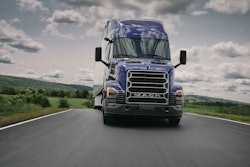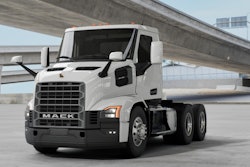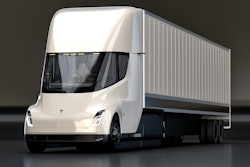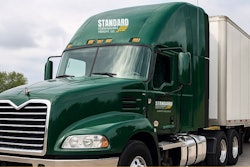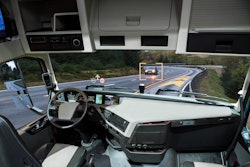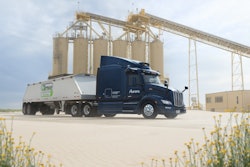Probably the toughest lesson I learned in my career is that everyone is right. Customers are always right. Experts are always right, even when they disagree. Management is always right.
The rise of the popularity of social media has clearly added fuel to this bonfire of rightness.
I’ve walked into the rightness minefield a few times in my career. I’ve watched others do so as well. There have been casualties, injuries and scars.
Sometimes, rarely, you find people willing to have open minds, willing to consider that their position may not be entirely correct, that there may be qualifiers to the rightness. In even rarer situations, usually in private, they may even admit they are wrong,
One example is in the world of heavy-duty truck aerodynamics. When I stumbled into it more than 30 years ago, I naively thought that everyone wanted the same thing — accuracy.
Accuracy is a measurement of how close your estimate is to reality.
What I learned the hard way is that every measurement, irrespective of how it is obtained, is an estimate of reality. Every single one.
This means that every single approach to aerodynamic measurement is right. And every single method is just an estimate. Whether you are doing on-highway testing, on-track testing, on-dynamometer testing, testing in wind tunnels with various scales of vehicle from matchbox to full size, or testing using the huge variety of computational fluid dynamics (CFD), they are ALL estimates of reality. Each is correct in its own context.
And each is a poor substitute for the actual real world.
Accuracy is not precision. There is a big difference between the two. Precision is the ability to get the same result if you do an evaluation multiple times. The answer can be entirely wrong, but if it is repeatable, it has a high precision. These two terms get muddied frequently. Precise does not mean accurate.
The race track is one of the best analogies I can think of when discussing the rightness of aerodynamic estimation. Many race teams use combinations of wind tunnels, CFD and track time to tune up the performance of their cars. Whether in NASCAR, Indy Car, F1 or Le Mans series racing, everyone appreciates the aerodynamic drag is often the difference between a podium finish or a DTN (did not finish).
What looks great in testing may or may not lead to a win in the race, proven over and over again every weekend of race seasons. Every race team has the best car and the best driver until the end of the race when reality has set-in and someone won and everyone else did not.
I recall one F-1 team that has a great track and a great wind tunnel, with great experts at both. They wanted more accuracy in their wind tunnel testing and upsized their wind tunnel models. Some of the findings were validated during controlled track testing. When race day came, both the wind tunnel work and the controlled track testing were found to be less than accurate. The vehicle’s actual performance was much worse than predicted. Investigations found that the tunnel work was no longer as reliable as it had been and the track testing was not accurately representing real-world racing conditions.
This story gets repeated frequently in predicting performance of heavy-duty trucks in the real world.
One of my first tasks for NACFE was writing about the challenges of predicting MPG of trucks in the real world in the report Determining Efficiency. This fell on top of SAE asking me to do the 2016 SAE Buckendale presentation Fuel and Freight Efficiency – Past, Present and Future Perspectives. These two reports were heavily downloaded, and I believe they are still very useful to the trucking industry.
Both reports document, to some extent, my decades of experiences understanding people when it comes to fuel economy performance.
There is a reason many experienced fleet owners and drivers do not believe fuel economy experts at suppliers, OEMs, government agencies, industry organizations, advocacy groups, universities and research centers.
All of them are right, and yet the fleets know from experience that all their expertise does not reflect the fleet’s own experience. This is why many fleets feel they have to do their own evaluations of vehicle technologies.
If we could all start from the same point, it would help. The real world is very difficult to accurately predict. The details and qualifiers matter.
I concede that everyone is an expert. Someone who owns and runs a wind tunnel has to believe their efforts are value added and correct. Someone who runs a test track is similarly convinced they can accurately predict the world and add value. The multitude of aerodynamicists running all those CFD software programs has to believe they are contributing to the accurate understanding of the real world. OEMs making new trucks and using all the tools are doing the best they think they can to optimize performance.
All those experts are right, and yet they quite often disagree, and quite often, the fleets see results contrary to their predictions. Managements at OEMs and suppliers base major capital investment decisions on these predictions. Sometimes the fleets don’t see the results advertised by the manufacturers.
And yet no one is technically wrong.
Confidence in performance predictions starts from understanding that the best all of us can do is estimate. In order to estimate, we have to make simplifications and assumptions. For example, a truck tested alone on a test track in near-zero ambient wind in very controlled conditions may have repeatable results, but does it reflect John or Jane driver in I-10 traffic conditions pulling a short, light trailer with a long tractor-trailer gap during a typical windy, humid Los Angeles day? All those details impact real-world results.
Analysists, marketing people, fleets and performance experts tend to oversimplify the discussion of fuel economy. They rarely get into the details. One of the most insightful statements ever is on the US EPA MPG window label of new cars, “Your results may differ.” In my experience, may should be replaced with will.
The real world is complex and all our efforts to model it are approximations with varying degrees of complexity and context. Those with vested interests believe their own predictions are valuable. They have to. The wiser ones admit they are just predictions and the context of each prediction is important.
In fuel economy and aerodynamics, remember that everyone is right, some are more right than others, and all are inaccurate.
As my NACFE associate Kevin Otto often states, “all models are wrong. Some are useful.”





